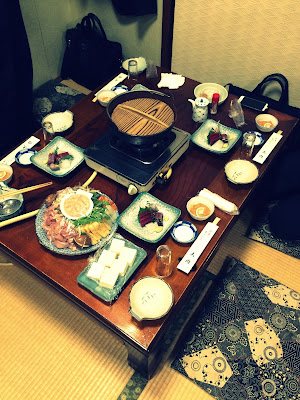When
we learned that our time in Singapore was limited, we came up with a list of the
places we hadn’t visited yet on this side of the world that we wouldn’t likely travel all the way back for. Sydney, Melbourne – we would venture back for that.
Myanmar (Burma), Brunei, Bali, the beaches of the Philippines were a few on a
very long list of places that we were much more likely to visit with Singapore
as a home base.
After
doing some research, the most logical choice for one of our last few weekends
left in Singapore was Brunei. It’s a short flight on a Friday night after work and we were
able to be back in Singapore by noon on Sunday.
Brunei
is a small country with a population of 413,000 which shares the island of Borneo, with Malaysia and Indonesia. According to the BBC, Brunei, which gained independence in 1984, has one of the
world's highest standards of living thanks to its bountiful oil and gas
reserves. Although you can certainly see the discrepancy between the working
class and the upper echelon.
 |
| The water village in the shadows of one of the palaces |
The Sultan of Brunei, Hassanal Bolkiah, is one
of the world's longest-reigning and few remaining absolute monarchs. He was
crowned in August 1968, is one of the world's richest individuals. (And oddly
enough has a giant property around the corner from Brother B in Las Vegas.
Small world!)
Not a bad "starter" house for a 34 year old prince!
In 2014, Brunei became the first East Asian
country to adopt Islamic sharia law despite widespread international
condemnation. In all fairness, I had girlfriends travel to the country alone and the
Bruneians are quite welcoming to tourists. These were some of the friendliest
people we’ve met in our travels. American and UK passport holders do not need a
visa to enter the country. Just behave
yourselves and do not expect to find any beer, ANYWHERE!
 |
| The water village |
Because the country is under sharia law, smoking is illegal and alcohol is not available/served anywhere. A perfect spot
for a post-wedding detox!
 |
| Jame Asr Hassanil Bolkiah Mosque |
We had a great tour guide Razie and driver
Helmi from Borneo Trekker. They were students studying hospitality and
tourism at a local trade school. They showed us some of the magnificent mosques, one of the Sultan’s
Palaces (from the outside of course), as well as a cruise down the river
through the mangroves to see the wildlife such as the proboscis and leaf monkeys
and crocodiles. We didn’t have time to venture out to the rainforest which is
3/5th of the country and is supposed to be a great place to explore and
stay overnight. We spent some time in a
water village with Razie’s aunt and cousin (everyone called him superman) who
was a professional body builder, boat fleet owner/driver, gym owner and all around entrepreneur.
 |
| Superman's boat business (he's the guy driving) in the mangroves |
One of our favorite parts of every holiday is the
food. We went to the big night market where we had kebabs (anyone who knows
Raegen is not surprised by this), fried bananas, Sambal Nasi Katok, fresh
coconut juice and honey BBQ chicken. Earlier in the day we tried Ambuyat, which is the national dish of Brunei.
It’s a starchy dish with a sticky but bland taste. We gave it a try as we were
told it was good for our insides. (All in the name of detoxing right?)
We asked Helmi where they were going out to for
the evening with their friends. That’s right you guessed it, Starbucks. (Starbucks - bridges all cultures.)
 |
Jame Asr Hassanil Bolkiah Mosque at night
We were glad to check a new place off our list although the passport stamp isn't quite as cool as it used to be.
|
Happy trails,
Amy & Raegen
















